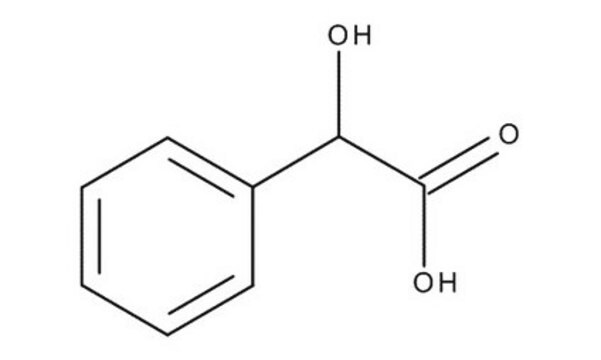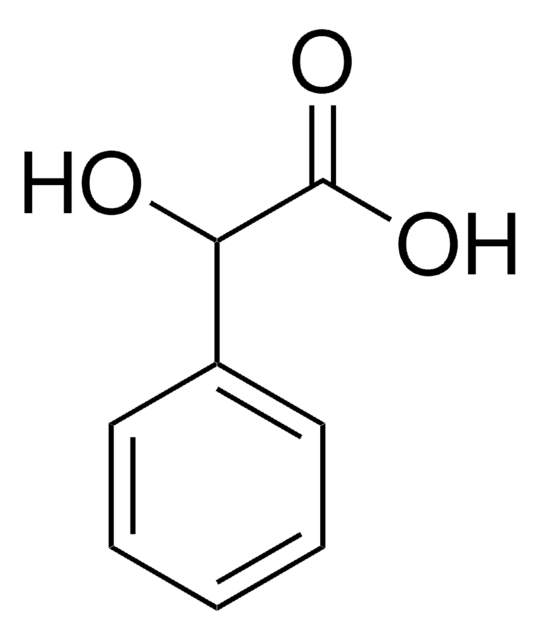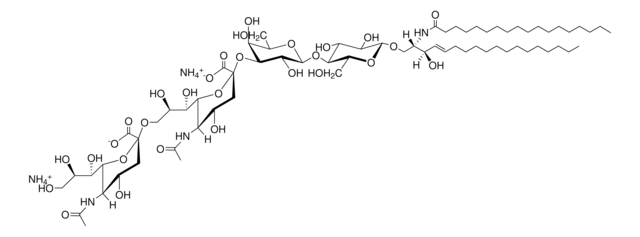Wszystkie zdjęcia(1)
Kluczowe dokumenty
48795
Manganese(II) chloride 0.1 M solution
Synonim(y):
Manganese(II) chloride solution, Additive Screening Solution 26/Kit-No 78374
Zaloguj sięWyświetlanie cen organizacyjnych i kontraktowych
About This Item
Wzór liniowy:
MnCl2
Numer CAS:
Masa cząsteczkowa:
125.84
Numer MDL:
Kod UNSPSC:
12352200
Identyfikator substancji w PubChem:
NACRES:
NA.32
Polecane produkty
gęstość
1.01 g/mL at 20 °C
temp. przechowywania
2-8°C
ciąg SMILES
Cl[Mn]Cl
InChI
1S/2ClH.Mn/h2*1H;/q;;+2/p-2
Klucz InChI
GLFNIEUTAYBVOC-UHFFFAOYSA-L
Szukasz podobnych produktów? Odwiedź Przewodnik dotyczący porównywania produktów
Zastosowanie
Manganese(II) chloride 0.1 M solution has been used:
- as a component of reprogramming media for culturing mouse neonatal tail-tip fibroblasts
- in the mutagenesis of WT clone by error-prone polymerase chain reaction (PCR)
- as a standard in isothermal titration calorimetry and differential scanning calorimetry
Ta strona może zawierać tekst przetłumaczony maszynowo.
Hasło ostrzegawcze
Warning
Zwroty wskazujące rodzaj zagrożenia
Zwroty wskazujące środki ostrożności
Klasyfikacja zagrożeń
Eye Irrit. 2
Kod klasy składowania
12 - Non Combustible Liquids
Klasa zagrożenia wodnego (WGK)
WGK 1
Temperatura zapłonu (°F)
Not applicable
Temperatura zapłonu (°C)
Not applicable
Środki ochrony indywidualnej
Eyeshields, Faceshields, Gloves
Wybierz jedną z najnowszych wersji:
Masz już ten produkt?
Dokumenty związane z niedawno zakupionymi produktami zostały zamieszczone w Bibliotece dokumentów.
Klienci oglądali również te produkty
Robert W Siegel
Methods in molecular biology (Clifton, N.J.), 504, 351-383 (2009-01-23)
Many biosensors depend on molecular recognition reagents to achieve highly sensitive and specific detection levels of an analyte of interest. Although new and improved detection platforms continue to be developed, improvements in the affinity and specificity of the molecular recognition
Barry J Bowman et al.
Eukaryotic cell, 11(11), 1362-1370 (2012-09-18)
The pmr gene is predicted to encode a Ca(2+)-ATPase in the secretory pathway. We examined two strains of Neurospora crassa that lacked PMR: the Δpmr strain, in which pmr was completely deleted, and pmr(RIP), in which the gene was extensively
Jerome A Roth et al.
Neurotoxicology, 35, 121-128 (2013-01-15)
Chronic exposure to Mn results in the development of a neurological disorder known as manganism characterized by neurological deficits resembling that seen in Parkinsonism. Although dopaminergic neurons within the nigrostriatal pathway appear intact, Mn-induced irregularities in DA transmission have been
A G Kanthasamy et al.
Toxicology letters, 214(3), 288-295 (2012-09-22)
The role of normal cellular prion protein (PrP) remains to be fully elucidated; however, the protein is crucial for the infection and progression of prion diseases. Recent evidence indicates that PrP is a metalloprotein since the octapeptide repeat sequences in
Xiao-fei Liu et al.
Biological trace element research, 151(2), 217-224 (2012-11-30)
Manganese (Mn) is an essential element required for normal development and reproduction. However, little is known about the reproductive toxicity of Mn in birds. To investigate the Mn-induced toxicity on testicular trace element levels and crucial hormonal parameters on male
Nasz zespół naukowców ma doświadczenie we wszystkich obszarach badań, w tym w naukach przyrodniczych, materiałoznawstwie, syntezie chemicznej, chromatografii, analityce i wielu innych dziedzinach.
Skontaktuj się z zespołem ds. pomocy technicznej







